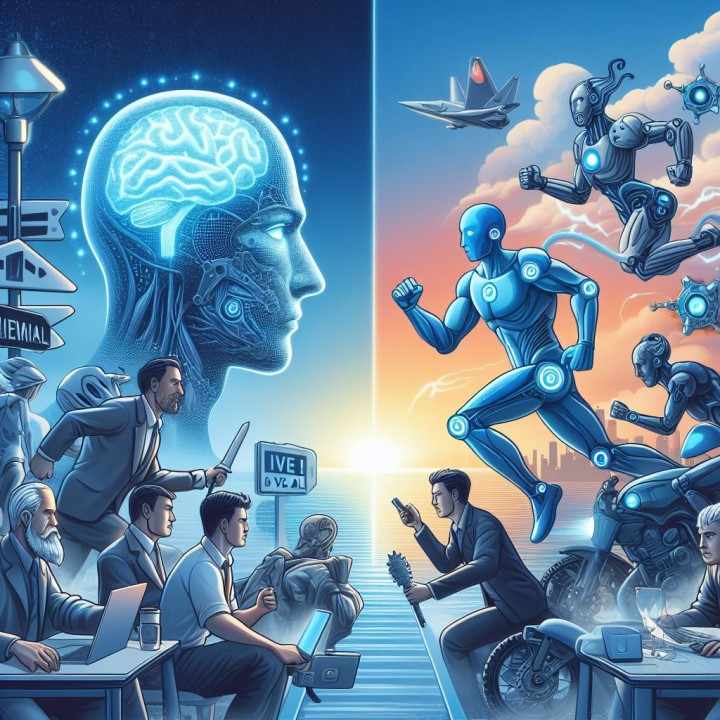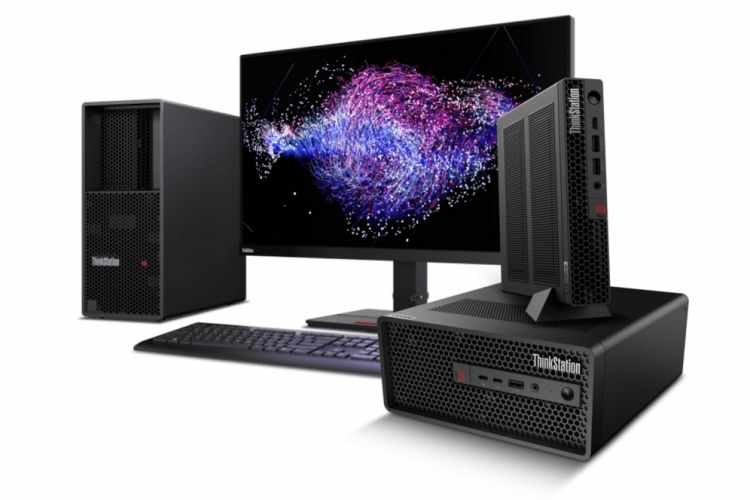
The rise of artificial intelligence (AI) is transforming industries at an unprecedented pace, sparking a heated debate about the future of the human workforce. As machines grow smarter and more capable, questions arise: Will AI complement human skills or replace them altogether?
From manufacturing lines to creative roles, the competition between humans and AI reshapes how we view work, productivity, and innovation. This fascinating clash of capabilities isn’t just about technology—it’s about redefining our place in a rapidly evolving world.
We all know that AI and human ability need to go hand in hand. A survey found that nearly four-fifths (79%) of company leaders feel their company needs to adopt AI to stay competitive, with around three-fifths (59%) worried about their ability to measure AI's productivity gains.
So, what does the future hold? Let’s explore the possibilities in this ever-evolving dynamic.
Smart Notebook PC and AI: Transforming Regular Tasks
AI is a game-changer for workplaces everywhere. It excels at handling tasks that are repetitive and time-consuming. For example, businesses use AI for customer service, where chatbots respond to common queries in seconds.
Most importantly, AI laptops offer a powerful combination of performance, personalization, and security.
Data analysis, which once required hours of manual effort, is now done in minutes. AI-powered devices, like the smart notebook PC, are reshaping how we complete daily tasks. With features like advanced note-taking and task management, these devices help people work smarter.
But while AI shines in speed and efficiency, it lacks something critical—emotional intelligence. It cannot replace the human connection that builds trust and understanding. For instance, even though AI tools help write emails or plan schedules, they still require human oversight to ensure the message feels personal.
Perfectly Blending Human Mind With AI
AI-powered devices, such as the smart notebook PC, revolutionize how we work and learn. These tools enhance productivity and help individuals upgrade their skills by simplifying routine tasks.
Let’s break them into tabular form:
This continuous learning approach increases the value of human effort and ensures that the workforce remains dynamic and future-ready. Adaptability and AI collaboration are the keys to success in an evolving professional landscape.
The best part is that AI will create new jobs, such as machine learning engineers, AI ethics specialists, and AI and cybersecurity researchers.
Collaboration Over Competition
The idea of AI replacing humans can feel scary. But AI works best when it supports humans rather than replaces them. Think of a smart notebook PC. It helps people stay organized, manage time, and store data.
However, it cannot think independently or make decisions that require judgment or experience. Humans add the “why” to the “how,” combining technical efficiency with meaningful insight.
For example, AI helps doctors analyze medical scans faster than ever in healthcare. However, the final diagnosis still requires a doctor’s expertise. This shows how AI and humans together can achieve more than either can alone.
Balancing Innovation and Humanity in Tomorrow’s Workforce
Even in a world of automation, people still value human interaction. A chatbot can answer questions quickly but not offer the warmth of a real conversation. Similarly, a smart notebook PC can organize meeting notes, but only one can deliver those notes with a clear vision.
The human touch makes relationships with colleagues, clients, or customers feel genuine. This connection is something AI cannot replicate, no matter how advanced it becomes.
As AI continues to reshape industries, the key challenge lies in harmonizing technological advancements with the unique strengths of the human workforce. Innovation drives efficiency and scalability, but humanity brings creativity, empathy, and ethical judgment. Striking a balance ensures that both elements complement each other rather than compete.
How to Achieve the Balance?
Redefining Roles: Organizations need to identify tasks better suited for AI, such as data analysis or repetitive processes, while reserving creative, strategic, and interpersonal responsibilities for humans.
Upskilling Employees: Investing in employee training to adapt to AI-integrated workflows empowers the workforce to leverage technology rather than fear displacement.
Focusing on Human-Centric AI: Developing AI systems that enhance human capabilities rather than replace them fosters a collaborative environment.
Prioritizing Ethical AI: Ensuring that AI operates within ethical guidelines prevents biases and promotes trust between technology and humans.
Why Does the Human Workforce Still Matter?
Emotional Intelligence: AI lacks the nuanced understanding of emotions, making humans indispensable for roles requiring empathy and interpersonal skills.
Creative Problem Solving: While AI excels at pattern recognition, humans bring out-of-the-box thinking to complex challenges.
Adaptability: Humans can pivot strategies in unpredictable scenarios where AI may falter due to rigid algorithms.
The workforce of the future isn’t about AI versus humans—it’s about partnership. By integrating AI to amplify human potential, businesses can achieve greater innovation while maintaining the irreplaceable value of the human touch. This synergy will lead to a more productive, ethical, and balanced workforce that thrives in a technologically advanced world.
Final Thoughts
AI is transforming the workplace, but it is not taking over. It acts as a powerful partner, helping humans achieve more. Tools like the smart notebook PC are a great example of this partnership, showing how technology can enhance productivity without replacing the human touch.
Humans remain essential because of their creativity, empathy, and leadership ability. AI may handle tasks, but people bring meaning and purpose to work. The future workforce isn’t about choosing between humans and AI but finding the perfect balance. When we work together, the possibilities are endless.


Write a comment ...